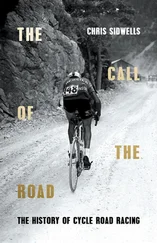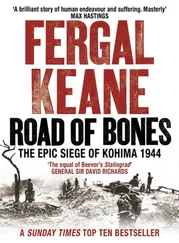Most reports suggest the Japanese did not attack refugees. But they were preyed upon by Burmese dacoits and frequently attacked by villagers resentful of the Indian presence in Burma. As is so often the way when war causes a vacuum in authority, the meanest elements of society emerged to terrorise, pillage and resurrect old hatreds. The Burmans also attacked minorities like the Karen and the Chin, both of which had remained largely loyal to the British.
Troops frequently encountered the bodies of Indian families butchered by the Burmans. A British officer, Captain James Lunt, remembered seeing a beautiful Indian woman ‘striding along like a Rajput princess, her child clasped to her left hip … her pleated dark red skirt swinging like a kilt at every stride. Bangles at her wrists and ankles tinkled as she passed, her kohl-rimmed eyes meeting mine for a brief moment.’ He would see her again. One evening he was driving past a line of refugees and noticed corpses by the roadside. ‘A bright red skirt caught my eye and we stopped the jeep. She lay there, her long black hair streaming out into a pool of fast-congealing blood, her throat cut from ear to ear … the bright red skirt had been pulled up above her waist in a final obscene gesture. The child, a little way apart, lay with its brains spilling on to the tarmac.’
The teenager Donald Mellican, of the Burma Auxilliary Force, was manning a barricade outside Rangoon when he saw the Governor come past with his entourage en route to an airfield in the north of the country. The most senior British official in Burma urged the troops to fight on, but left too quickly to hear the men shout curses after him. Governor Dorman Smith had been given strict orders by Churchill to get out of Burma before he could be captured by the Japanese. Mellican trudged out of Burma in a long procession of soldiers and civilians, keeping despair at bay by reciting times tables and nursery rhymes. At one point he saw an Indian woman and two small children standing by a steep drop on a hairpin bend. ‘Before the next bend I turned to look back and only two children were to be seen.’
Mellican reached India after walking for three weeks. Only later would he find out that his mother and five siblings had died crossing the Hukwang Valley. One of them, Patrick, suffered an infected toe which quickly swarmed with maggots. They soon covered his entire body, ‘which made him go off his head before he died’. His father and his youngest brother, Reggie, struggled on until they met a Gurkha family. By this time the father was too weak to care for the child. Leaving him with the Gurkhas, he trudged on towards India, where he died soon after arriving.
An American missionary doctor retreating with refugees and Chinese troops recorded the primitive conditions in which he had to operate. ‘No sooner had we finished lunch than the Friends brought in another thirty-five patients,’ wrote Dr Gordon Seagrave. ‘One of them had his englarged spleen shattered by a shell fragment. Insects were so numerous that they kept dropping into the wounds of the abdominal cases … We have been burning up the bloody remnants of clothes we have had to cut off our patients and cleaning up the grounds … My, what a stink!’
The locally recruited forces deserted the British in droves. According to one official estimate, by the end of the retreat only just over 6,000 remained out of a pre-war total of 20,000. Most were probably driven by the understandable desire to get back to their villages to protect their families, unwilling to risk a long exile in alien India or death for a cause they did not believe in. Some were also subject to political pressure from nationalists. Desertions among Indian troops in the Burmese army were prompted less by political considerations than by a desire to join their families who were fleeing the country.
The families of British officers in Burma joined the exodus. In most cases their men had already been called to duty. Mollie Birch set off with her two-and-a-half-year-old daughter for India a few weeks after her husband was sent into action. She passed from train to refugee camp and then on again before arriving at the Chittagong Social Golf Club in Bengal on the evening of its annual dinner-dance. ‘They had heard evacuees were expected, had arranged for us to be taken to the club and to be given their dinner. As soon as we appeared the music stopped and everyone looked our way, we must have looked a very sorry sight, talk about chalk and cheese, here we were about thirty, dirty, smelly women and children – they were immaculate.’
Captain James Lunt, a Staff Officer with 2 Burma Brigade, was astonished by the behaviour of some of the British civilians he met along the route. ‘One man, a civilian whom I had known in happier times, sat down on my stretcher weeping copiously as he estimated his chances of obtaining some priority for the air trip to India. Another, a woman whom I had met in Mandalay, beseeched me to take her fur coat with me. She was wearing it at the time. Since I could barely stand, let alone walk, a fur coat was the last thing I wanted to be encumbered with.’
With the fall of Malaya and Singapore in the preceding months, the loss of Burma in May 1942 completed the trampling of imperial prestige. Emboldened by the Japanese successes Burmese nationalists lit large fires close to British positions to help guide Japanese bombers, while small groups of British troops had to be wary of attack from guerrillas. Across the newly taken Japanese possessions the first phase was underway in one of history’s epic movements: in Malaya and Burma, across French Indochina and the Dutch East Indies, putative nation states, rival political groups, competing ideologies and numerous ethnic minorities, would emerge to stake their claims to power. Writing as the retreat north was gathering pace and a fortnight before he became deputy Prime Minister the Labour Party leader, Clement Attlee, put the matter succinctly. What was taking place was a continuation of European decline in Asia that had begun with the defeat of Russia by Japan in 1905. ‘The hitherto axiomatic acceptance of the innate superiority of the European over the Asiatic sustained a severe blow. The balance of prestige, always so important in the East, changed. The reverses which we and the Americans are sustaining from the Japanese at the present time will continue this process.’
Many were nervous of Japanese intentions. Sometimes they were the victims of savage Japanese repression. In Burma looters were shot on sight and their bodies publicly displayed as a warning. Drunks were tied up at traffic islands and made to stand for twenty-four hours without food or water. Ramesh S. Benegal, an Indian living in Rangoon, walked to Soortie Bara Bazaar, one of the city’s main shopping areas, and was confronted by a grotesque vision. At each of the four corners of the bazaar a severed head had been mounted on a pole. A note told passers-by that this fate awaited any who transgressed the law. But whether they were nationalists who welcomed the Japanese, or were simply cowed by the new occupiers, all were conscious that the age of the white master had gone.
Some officials certainly sensed the larger historical implications of the catastrophe. ‘We will never be able to hold up our heads again in Burma,’ said F. H. Yarnold, a deputy commissioner in the district of Mergui. For the fighting men retreating towards India there was little time to reflect on the great sweep of history. As the Japanese advanced from the east and south, the soldiers of the British, Indian and Burmese armies fought to escape a gigantic trap.
* Manchester Guardian , 2 February 1942. Up to quarter of a million Chinese worked to build the road between 1937 and 1938, an epic feat of engineering and labour.
Читать дальше












